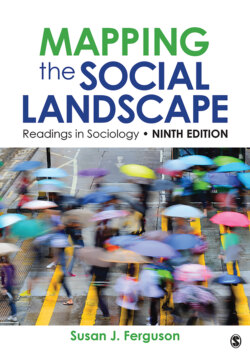Читать книгу Mapping the Social Landscape - Группа авторов - Страница 47
Reading 8 Interpersonal Dynamics In A Simulated Prison
ОглавлениеCraig Haney, W. Curtis Banks, and Philip G. Zimbardo
Ethical questions concerning social research are a rather recent discussion in the history of social science. It was not until the 1960s and early 1970s that we began to question research protocols and the effects of social experiments on humans. This second reading in the social research section, by Craig Haney, W. Curtis Banks, and Philip G. Zimbardo, reviews the research methodology used in Zimbardo’s famous prison study conducted in 1971. Zimbardo, a professor emeritus of psychology at Stanford University, was fascinated with the social dynamics of prisons, especially the social interaction that takes place between guards and prisoners. The following selection takes us inside the research world of the prison environment and reveals many ethical and logistical concerns about using social experiments to study human behavior.
Source: Craig Haney, W. Curtis Banks, and Philip G. Zimbardo, “Interpersonal Dynamics in a Simulated Prison” [abridged] from International Journal of Criminology and Penology 1 (1973): 69–97. Reprinted with the permission of Craig Haney.
Although we have passed through many periods of so-called prison “reform,” in which physical conditions within prisons have improved and in which the rhetoric of rehabilitation has replaced the language of punitive incarceration, the social institution of prison has continued to fail. On purely pragmatic grounds, there is substantial evidence that prisons really neither “rehabilitate” nor act as a deterrent to future crime—in America, recidivism rates upwards of 75 percent speak quite decisively to these criteria. And, to perpetuate what is additionally an economic failure, American taxpayers alone must provide an expenditure for “corrections” of 1.5 billion dollars annually. On humanitarian grounds as well, prisons have failed: our mass media are increasingly filled with accounts of atrocities committed daily, man against man, in reaction to the penal system or in the name of it.
Attempts at explaining the deplorable condition of our penal system, and its dehumanizing effects upon prisoners and guards, characteristically focus upon what can be called the dispositional hypothesis. Rarely expressed explicitly, it is central to a prevalent nonconscious ideology: The state of the social institution of prison is due to the “nature” of the people who administrate it, or the “nature” of the people who populate it, or both. The dispositional hypothesis has been embraced by the proponents of the prison status quo (blaming violence on the criminal dispositions of prisoners), as well as by its critics (attributing brutality of guards and staff to their sadistic personality structures). The appealing simplicity of this proposition localizes the source of prison riots, recidivism, and corruption in these “bad seeds” and not in the conditions of the “prison soil.” The system itself goes on essentially unchanged, its basic structure unexamined and unchallenged.
A critical evaluation of the dispositional hypothesis, however, cannot be made directly through observation in existing prison settings, since such naturalistic observation necessarily confounds the acute effects of the environment with the chronic characteristics of the inmate and guard populations. To partial out the situational effects of the prison environment per se from those attributable to a priori dispositions of its inhabitants requires a research strategy in which a “new” prison is constructed, comparable in its fundamental social-psychological milieu to existing prison systems but entirely populated by individuals who are undifferentiated in all essential dimensions from the rest of society.
Such was the approach taken in the present empirical study, namely, to create a prisonlike situation in which the guards and inmates were initially comparable and characterized as being “psychologically healthy,” and then to observe the patterns of behavior which resulted and to record the cognitive, emotional, and attitudinal reactions that emerged.
No specific hypotheses were advanced other than the general one that assignment to the treatment of “guard” or “prisoner” would result in significantly different reactions on behavioral measures of interaction, emotional measures of mood state and pathology, and attitudes toward self, as well as other indices of coping and adaptation to this extreme situation.
